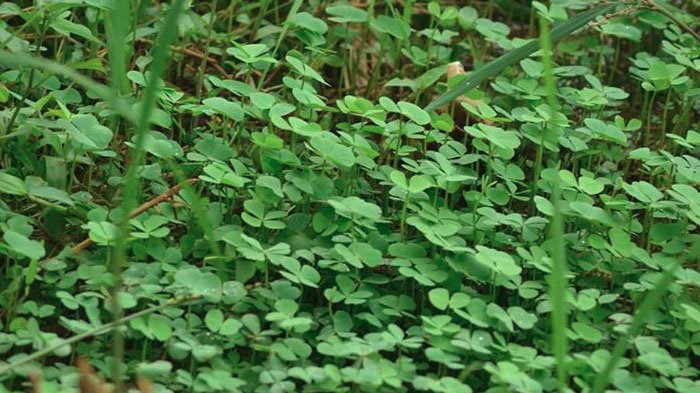Marsilea crenata Presl., or commonly known by the local name semanggi, is a plant familiar to Indonesian people, especially in Surabaya area, East Java. This plant is used as the main ingredient in culinary specialties of City of Heroes, pecel semanggi. After several studies, this aquatic plant has shown great benefits in the health sector, especially to deal with health problems that arise due to decreasing estrogen, in women who enter menopause.
Estrogens are a group of steroid hormones that have the highest levels in a woman’s body. This hormone plays an important role in maintaining the balance of a woman’s body, by regulating the development and growth of several important organs such as the brain. In the brain, estrogen plays an important role in maintaining healthy brain function because it is neuroprotective, protecting neurons from various types of damage that can cause neurons death.
But over time, women will experience one of the stages of life, menopause, a period in which the transition phase from reproductive to non-reproductive occurs due to the decreasing amount of the hormone estrogen in the body. Menopause consists of several stages, namely pre menopause, menopause, and post menopause. The decrease in estrogen at that time causes various complaints and problems in women which decrease quality of life and causes discomfort in daily activities. Some complaints that are often found in postmenopausal women are memory deficits and impaired concentration.
One of the therapies currently available to increase the amount of estrogen in the body is hormone replacement therapy (TSH), unfortunately this therapy can cause side effects such as breast cancer. Therefore, a safer alternative therapy is needed to increase the amount of the hormone estrogen in the body again. One of the therapies currently being researched is therapy using phytoestrogens, a class of plant compounds that are similar in structure to estrogen and are believed capable to replace the role of estrogen in the body.
Water clover plants are thought to contain phytoestrogens, because in previous studies on female mice that were induced to experience a decrease in the hormone estrogen and treated with water clover, they were able to increase bone density in these animals. Further research was carried out computationally, in which the content of the compounds that had been analyzed from the clover leaves using the UPLC-QToFMS / MS instrument was tethered with estrogen receptor-β (ERβ), one of the estrogen hormone receptors that binds estrogen and activates its function.
First, the water clover leaves were extracted using 96% ethanol solvent, then fractionated using ethyl acetate as a solvent to obtain a purer compound content. The ethyl acetate fraction is then dissolved in two solvents, DCM and methanol to represent polar and non-polar profiling of compounds. The compound content of semanggi leaves was then analyzed using the UPLC-QToFMS / MS instrument, to obtain a profile of the ethyl acetate fraction of semanggi leaf compound. The compounds that have been analyzed are then processed using Masslynx 4.1 software to obtain data from the peak formed.
Based on the results of compound profiling using UPLC-QToFMS / MS, the ethyl acetate fraction of water clover leaf in DCM solvent contains 56 compounds and 72 compounds in methanol solvent. Of all the peaks produced, only 84 peaks that can be identified. The identified peaks were then screened using the SwissADME WebTool, to predict the ability of the compound to get through the blood brain barrier. From the analysis conducted, there were 35 compounds that were able to penetrate the blood brain barrier. The compounds that passed the screening are then tethered to the estrogen-β receptor with the protein code 3OLS.
The tethering process was carried out using the PyRx 0.8 program with the AutoDock Vina method . After tethering, the results are displayed using the Discovery Studio Visualizer. Based on the results of tethering of these 35 compounds, it was found that there were 7 compounds that were predicted to be ER-β receptor agonists. This means that these seven compounds are able to bind to ER-β and are predicted to have similar activity to the hormone estrogen. A compound is called an ER-β receptor agonist when the compound binds to the amniotic acid His475 and interacts with the amino acids Glu305 or Arg346. This amino acid is a type of amino acid that is bound by the hormone estrogen in the body, known as 17β-estradiol.
Based on the results of the computational research, it can be predicted that water clover leaves contain phytoestrogen compounds. So it has great potential in restoring the function of the hormone estrogen in the body, as a neuroprotective agent, protecting nerve cells from various damages. Further in vivo research can be carried out to prove this.
Author: Prof. Dr. Hening Laswati dr., Sp.KFR(K)
Details of this research can be accessed on the page: https://rjptonline.org/AbstractView.aspx?PID=2020-13-8-36
Mangestuti Agil, Hening Laswati, Hadi Kuncoro, Burhan Ma’arif. In silico Analysis of Phytochemical Compounds in Ethyl Acetate Fraction of Semanggi ( Marsilea crenata Presl.) Leaves As Neuroprotective Agent. Research J. Pharm. and Tech. 13 (8): August 2020





